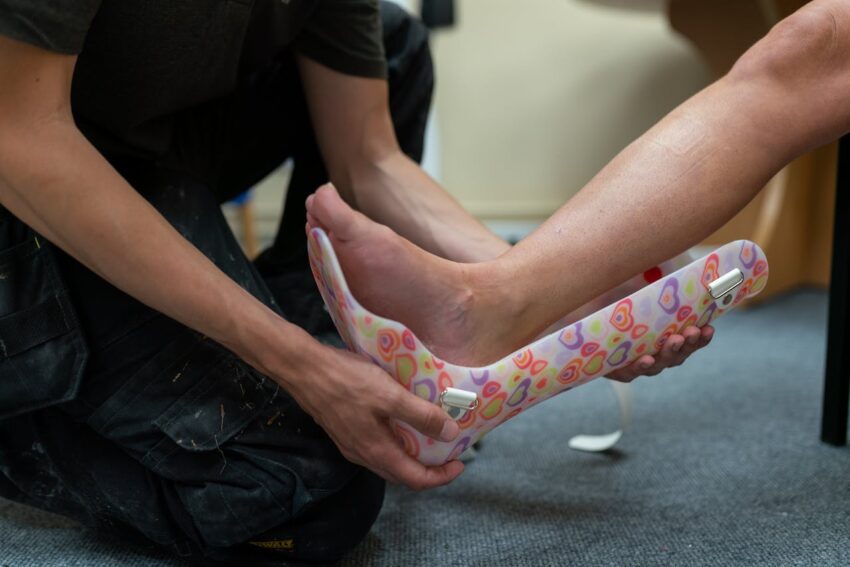Canadian Certified Pedorthists are orthotic and lower-limb brace experts. They are one of few healthcare professionals trained in lower-limb anatomy, gait analysis, and foot/leg movement.
Pedorthists are trained in designing, manufacturing, fitting, and modifying footwear and orthotics to ease pain, improve mobility, and help you lead an active lifestyle. Pedorthists work with doctors and physical therapists to create treatment plans.
Pedorthists Make Custom-Made Orthotics
Whether you suffer from foot problems related to your job, age, or a health condition, custom orthotics can support you to stay active. Pedorthists use exact measurements and impressions to create orthotics that fit comfortably in your shoes. These devices can be soft, semi-rigid, or rigid.
Pedorthists work closely with your doctor and health care team to manage comprehensive pediatric patient care, including assessment, treatment plan formulation, implementation, and follow-up. They have an extensive knowledge of anatomy, gait analysis, and biomechanics of the lower leg and foot. They are also trained in footwear fitting, orthotic fabrication, and shoe construction and modification.
Unlike a podiatrist, pedorthists are qualified to select and modify footwear and pedorthic devices like braces, night splints, or partial-foot prosthetics. This helps you maintain and regain your ability to walk normally.
Pedorthists Assess Your Feet
Pedorthics is the design, manufacture, modification, and fitting of footwear and foot orthoses to alleviate foot problems caused by disease, injury, or congenital disability. HHP has two Certified Pedorthist ottawa on staff to help you relieve foot pain, improve balance, and prevent future injuries.
A Pedorthic assessment will consider your medical history, current symptoms, and daily activities to determine the cause of your pain. A non-weight bearing assessment, muscle testing, and gait analysis will be conducted to see how your feet interact with the ground.
Canadian Certified Pedorthists are trained to assess lower extremity anatomy and biomechanics, as well as shoe construction and modification, lower limb orthotic fabrication and materials, footwear fitting, and patient/practice management. They work closely with physicians and nurse practitioners to help patients with lower limb conditions live active lives. They can modify off-the-shelf shoes and make custom orthotics. They are also compression fit certified and can help manage specific lower limb conditions.
Pedorthists Work With Your Doctor
Pedorthists work closely with doctors to develop treatments that meet the specific needs of patients. They may make orthotics, shoes, or other devices for arthritis, diabetes, geriatrics, sports-related injuries, and congenital foot disabilities.
Unlike Podiatrists, pedorthists have specific training to observe how clients walk and move. This is necessary to diagnose and treat them properly. They are also compression fit specialists with experience modifying off-the-shelf footwear and lower limb braces.
In addition to easing pain, orthotics can prevent problems with hips, knees, and spine. For this reason, pedorthists work closely with doctors and physical therapists to improve their patient’s overall quality of life. If you want to become a pedorthist, try working summer jobs at medical facilities, podiatrists’ offices, or shoe stores to get a feel for the field. Then, take the necessary steps to obtain a proper education. You will be glad you did!
Pedorthists Work With Other Health Care Professionals
As pedorthists work with doctors and patients to find conservative (non-surgical) treatment options for lower limb problems, they need to be able to work well as part of a team. This is a considerable challenge given that most people outside of O&P or pedorthics need help understanding what a pedorthist does and their role.
Pedorthists can design, manufacture, and fit custom orthoses, shoes, shoe inserts, and other devices designed to alleviate pain, improve foot function, or correct deformities of the feet and ankles. They are trained to analyze foot biomechanics and have extensive knowledge of lower limb anatomy.
A pedorthist can provide a full biomechanical assessment, which includes a patient history, current footwear analysis, range of motion testing, manual palpation of the lower limbs, and a visual gait analysis. They can also work with physiotherapists, podiatrists, and orthopedic surgeons to find the best solutions for their patients. Many insurance plans cover services and products provided by Canadian Certified Pedorthists.


